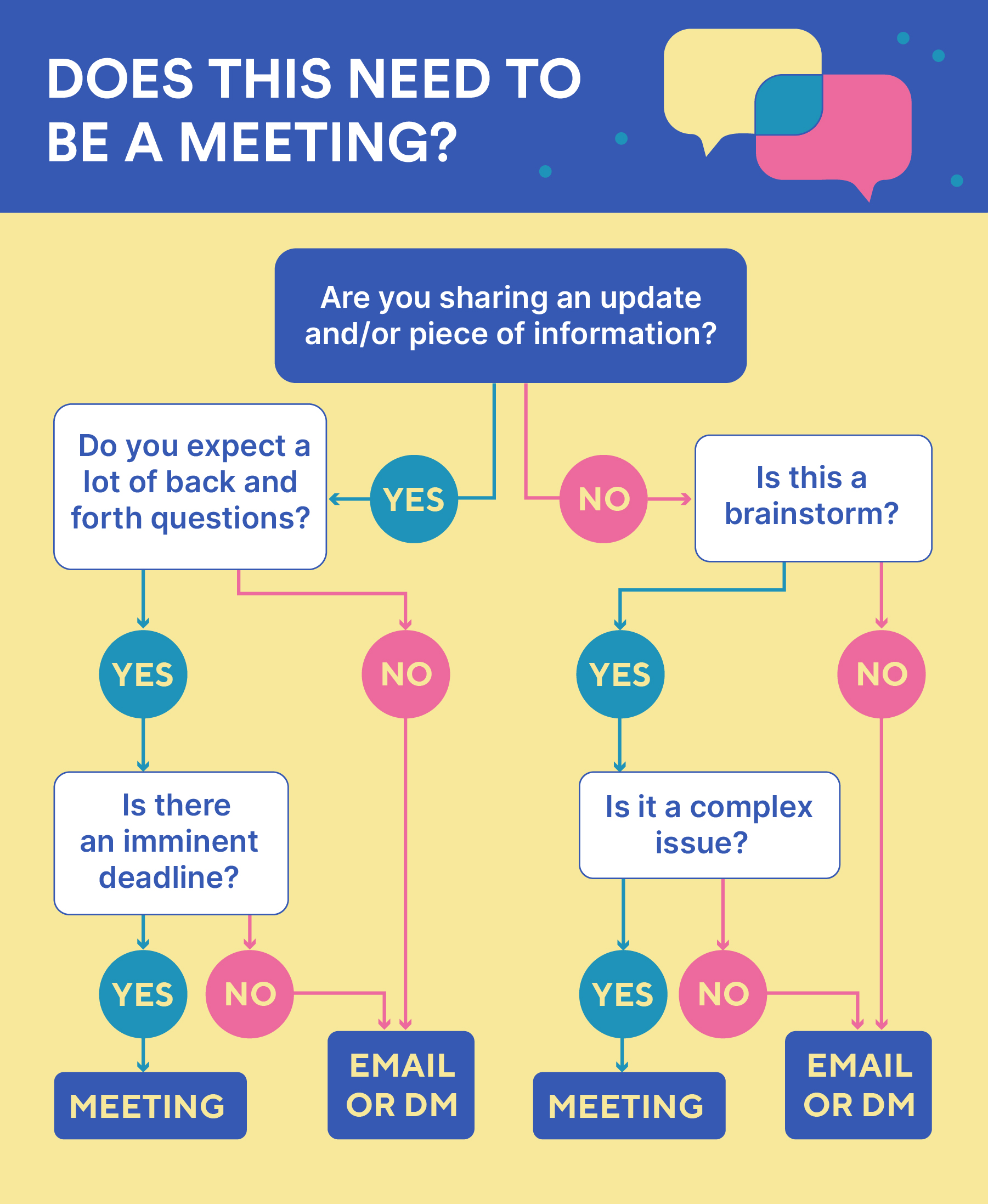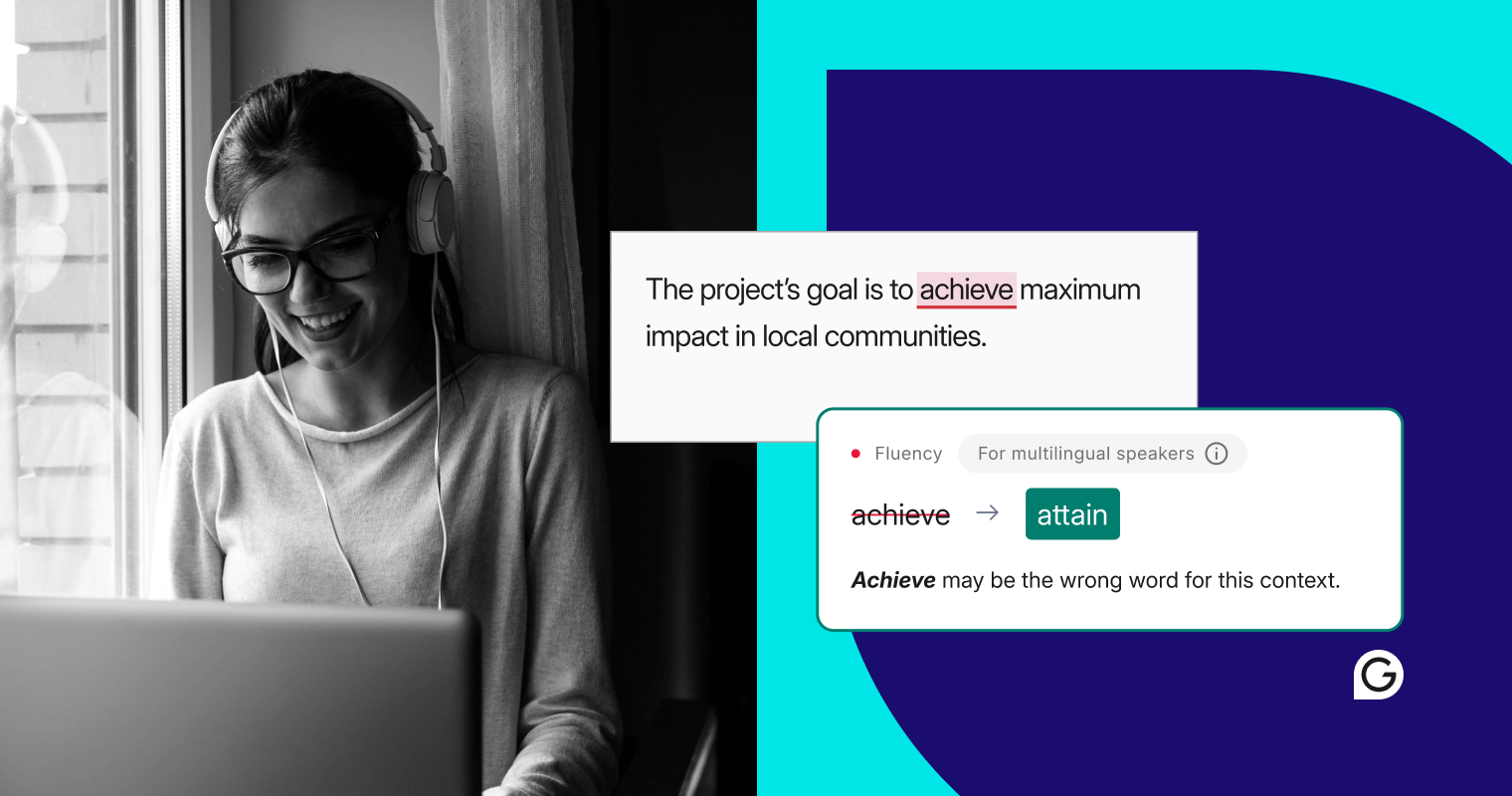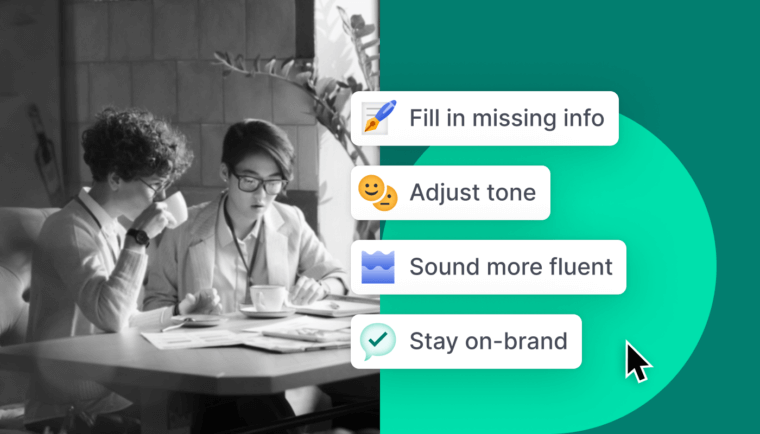
It’s an axiom among editors that many books should just be stories, and many stories should be shorter. In the workplace, something similar is often true for video conferences, emails, and messages.
So how do you decide when a meeting is necessary? What are your alternatives, and what determines when they’re appropriate? Fortunately, we don’t need to pull a dozen people into a video conference to clarify this.
Below, you’ll find a handy decision tree to decide when to schedule a meeting, and when you might instead opt for asynchronous communication.
What is asynchronous communication and what are its applications at work?
Asynchronous communication is a fancy term for the opposite of a real-time (a.k.a. synchronous) meeting. It differs from “live” or instantaneous discussion that occurs in person, on a phone call, or through the now-ubiquitous Zoom meeting.
Asynchronous communication tends to be slower and is often text-based, using platforms like Slack and email. (To the extent voicemail still exists, that probably counts too.)
People can take their time responding using asynchronous communication, which is sometimes a good thing, as they can process information and gather their thoughts—and is sometimes agonizing, like when you need someone to give you an answer now-ish.
What can and can’t be communicated in a meeting?
A meeting is a good venue for a conversation, say, if your team wants to brainstorm and share a variety of perspectives. Meetings also shine when you’re fostering team relationships, when you’re trying to work toward some consensus on a decision, or if there’s a plan you need to align around—especially if a deadline is imminent.
The occasional five-minute phone call can also sort out enough questions to save time otherwise spent typing out a slew of back-and-forth emails or Slack messages.
But alas, not all meetings can be so productive. If you want your boss to know you’re making headway while working from home, some of your updates are probably more scintillating than others. A periodic email may suffice in place of a standing weekly meeting.
If you’re considering calling a meeting to disseminate information, ask yourself if that meeting seems likely to feel like a lecture—or if the details you’re sharing might be better served in writing rather than over Zoom. Then again, if you anticipate fielding lots of overlapping questions, it might make sense to answer them all at once in a meeting, rather than in a long series of individual follow-ups.

The etiquette of asynchronous communication
Where in a live meeting you might respect people’s time by setting and following an agenda, a nice, concise email might end by summarizing action items and what’s next. Tidy examples include “I look forward to your feedback,” or “Let’s plan to decide during Monday’s call.”
Be deliberate in choosing between an email or an instant message. The advantage of platforms like Slack is that colleagues can tune into the conversation if or when it concerns them, and without junking up everyone’s inboxes. But a channel’s utility declines if, absent a clear objective, it becomes an endless chat dominated by big personalities.
And while email and Slack responses aren’t required immediately, such exchanges generally shouldn’t drag on for weeks. One way to politely nudge someone is to mention a deadline: “I’d love to get your input by Wednesday.” It might be helpful to set that deadline apart by putting it on a separate line or bolding it, just to make sure it’s hard not to see.
After all, you presumably want to get through talking and get some actual work done.






